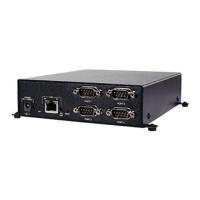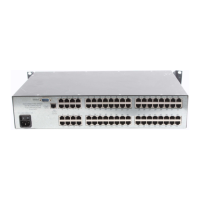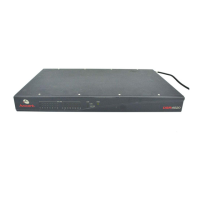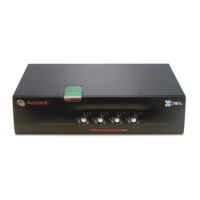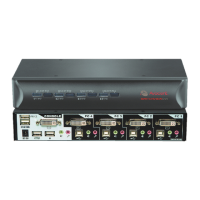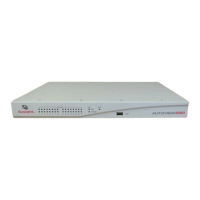Chapter 6: Configuration Files 59
Network Command
The Network command specifies the ESP hub’s network address and interface information.
NETWORK IP=<ip> MASK=<mask> GATEWAY=<gateway>
INTERFACE=AUTO|10|10HD|10FD|100|100HD|100FD
The addresses must be entered in standard IP dot notation. The gateway address must be in the
same subnet as the IP address. You cannot set the IP address to: a Class A address of 0.0.x.x, a
loopback address of 127.x.x.x, the default value of 192.1.1.1 or an address at or above 248.x.x.x.
The subnet mask cannot be 0.0.0.0.
The interface value is used for the network connection. See Network Interface on page 9 for
more information.
AUTO = auto-negotiate 100 = 100 Mb/second, full or half duplex
10 = 10 Mb/second, full or half duplex 100HD = 100 Mb/second, half duplex
10HD = 10 Mb/second, half duplex 100FD = 100 Mb/second, full duplex
10FD = 10 Mb/second, full duplex
Configurable Features Commands
Table 6.1 shows the syntax of the configurable features commands. Table 3.11 on page 29
describes each feature.
Initiating a Configuration File Download
When used from a BootP or DHCP server, no user interaction is required to initiate a configuration
file download if the hub does not have a unique IP address. Specify the configuration file as the
“bootfile” option on the server. To use a DHCP server, the ESP hub must have an infinite lease on
its assigned IP address.
If the hub has a unique IP address, the user must manually clear the IP address and then reboot the
hub, or otherwise manually force the BootP request.
Table 6.1: Configurable Features Commands
Command Syntax Description
IPVIADHCP ENABLE|DISABLE Enables or disables acquiring the IP address using DHCP.
ADMINVIASNMP ENABLE|DISABLE Enables or disables administrative functions using SNMP.
WEBINTERFACE ENABLE|DISABLE Enables or disables use of the web interface.
CONFIGVIATELNET ENABLE|DISABLE Enables or disables use of the configuration utility.
NETADMIN ENABLE|DISABLE
Enables or disables the sockets-based interface for
administrative functions such as the ESP-View diagnostic utility.
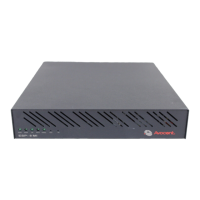
